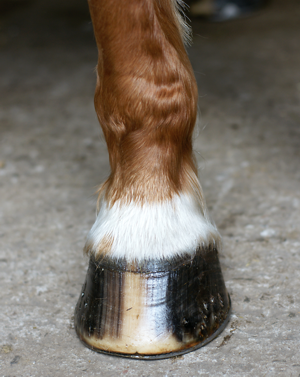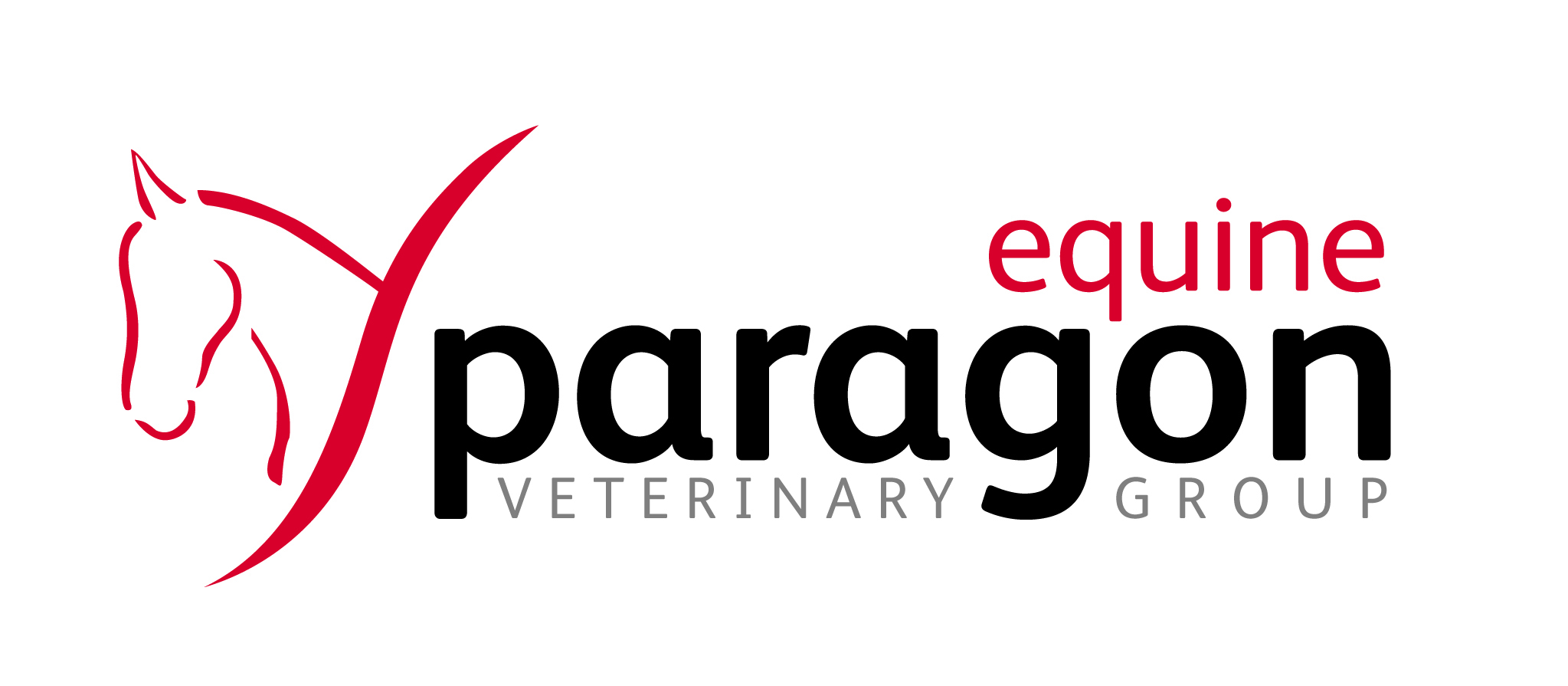Hooves; A Veterinary Perspective
Over millions of years wild horses evolved to graze whilst walking long distances overdifferent types of ground. Their hooves would naturally wear away without the need for trimming or shoeing. However, as we’ve domesticated horses and ponies and asked for more in terms of performance, we’ve needed to introduce careful management to ensure they remain pain free and to treat them as quickly as possible when problems do occur. In this article, Sarah Hogg (BA VetMB MRCVS) from Paragon Equine in Cumbria, looks at how to spot foot pain, what can cause it and how we might be able to treat it and prevent further problems.
 How do I know when my horse has sore feet?
How do I know when my horse has sore feet?
Sudden, severe foot pain is usually easy to see but chronic cases can be more subtle and trickier to spot. Signs to look out for include:
- Hot feet
- Digital pulses
- Pointing a foot to avoid carrying weight on it
- A short, painful gait which is worse on hard or stony ground
- A reaction or snatching to pressing the hoof with fingers or hoof testers
- A change in shape of the foot
- A change in gait (the way the horse walks)
- Unusual resistance to farrier picking up feet, trimming or banging in nails
Causes
- Environment
Hard dry ground and soft, boggy ground can both be damaging to horses hooves, especially for those living out or competing. Hard ground increases the concussive force on the hoof each time it hits the floor predisposing it to cracks, bruising and other damage. Prolonged contact with wet, muddy ground leaves hooves soft or more prone to abscesses and infections like thrush, especially if horses have underlying conditions such as Cushing’s disease (PPID). An increase in flies or mite infestations can also pose a problem as horses repeatedly stamp their feet, causing damage.
- Farriery
Inappropriate trimming and shoeing can cause foot pain. Choosing a farrier you respect, who communicates well and has a good working relationship with your vet can help you avoid this. Minor issues such as ‘nail prick’ or ‘nail bind’ (where a nail catches a sensitive part of the foot) can happen for even the most experienced farriers, but the feet should be well balanced and you should feel comfortable asking questions about your horse’s feet or choice of shoeing. One of the most common farriery issues causing foot pain is a long toe and low heel. Over time this predisposes the heel, toe and other internal structures of the hoof and lower leg to damage. Managing toe length is especially important for horses and ponies prone to laminitis.
- Orthopaedic
Many veterinary conditions can cause foot pain. Some, like laminitis, navicular pain and foot abscesses are well known. Others, like problems involving the deep digital flexor tendon (DDFT) and sesmoidean ligaments, can require more in-depth diagnostic work to identify.
- Genetics
True genetic conditions in the hoof are rare. With the exception of hoof wall separation disease (HWSD), a very severe foot problem seen in Connemaras and Connemara crosses, it has been very hard for researchers to prove a link between genetics and other conditions like navicular disease. Most people believe there is some element of heritability in complaints such as thin soles or flat feet, but we also need to be mindful of how our husbandry may cause or exacerbate these. Whether due to genetics or poor management, making sure any horse you purchase has had a Pre-Purchase Examination will make sure you are informed about their hoof quality and any potential problems the examining vet can see.
Treatment
- Veterinary treatment
Remedial shoeing is often a good option for managing foot pain and radiographs (X-rays) allow your vet and farrier to choose an appropriate shoe and balance the foot’s internal stuctures. It also allows monitoring, to check if treatment is working or conditions such as laminitis are causing further deterioration. Your vet can supply topical (paint-on) treatment for the hoof where necessary to help it harden or to treat any infection. Vets can also help with a more holistic plan to prevent hoof damage, advising on husbandry and environment and prescribing medicines to prevent fly bites and eradicate mites that could encourage repetitive stamping.
- Farriery
Regular trims and choosing appropriate shoes (where shoes are required) are vitally important to foot management, especially where there is pain. There are plenty of options for managing different conditions, such as using pads under shoes for flat-footed or thin soled horses.
- Nutrition
Using a supplement rich in biotin, along with methionine, zinc and iodine helps hooves to grow stronger. Look for an improvement in hoof quality rather than growth rate. Try to find a product that provides 20mg of biotin each day; these are often available from your veterinary practice.
Disorders of the hoof
Keratoma
Keratomas are benign, slow-growing tumours of the foot that start to grow inside the foot at the coronary band and extend down the hoof as it grows. If they reach the white line (where the sole and hoof wall meet) they can cause damage and separation. They often cause the outside of the hoof wall to distort with a visible bump and cause a mild, intermit lameness. Keratomas are usually treated by resection (surgical removal) under standing sedation. The hole can then be filled to provide protection while the hoof grows out, which takes around 6 – 12 months.
Thrush
Thrush is a bacterial infection of the frog, which usually occurs after the horse has stood for prolonged period in wet conditions (either wet ground or bedding), although other factors such as ill-fitting heart bar shoes can also allow infection to establish. The most obvious symptom is a distinctive, foul ‘cheesy’ smell and black discharge. The frog may become softer or change shape. Although thrush doesn’t tend to cause lameness, unchecked infection can spread deeper into the foot, infecting the hoof wall, digital cushion or heel bulbs. The first stage of treatment is to move the horse onto a clean, dry surface. Any excess tissue around the frog should be pared away by a farrier or vet. This may need repeating. A solution such as povidine iodine is applied to dry the tissues out, then an antibiotic spray is applied. If the infection is severe or paring has been extreme, the foot can be dressed.
Coronary Band Injury
The coronary band (or coronet) is the soft, pale area above the hoof. It is incredibly important as an area of growth for new hoof so any damage or injury here can have long-lasting or permanent consequences. The most common injuries are damage from wire or fencing, sharp rocks, over-reaching hind feet, punctures from debris such as nails or avulsions (where the hoof is ripped away from the foot tearing the delicate tissues of the coronary band). First aid involves applying pressure to stop the bleeding without applying a bandage to the band itself and risking further damage. Your vet can then clean the wound and apply a dressing if appropriate. The horse needs to be kept in a clean, dry stable and regular farriery will be required to support the hoof as it starts to grow and manage any defect. Acrylic fillers can be used in cracks to strengthen the hoof and prevent further damage. It is crucial to keep the feet well-trimmed for the rest of the horse’s life to prevent a long toe worsening the crack or causing further damage at any weak spots.
Foot abscesses
Abscesses are caused when bacteria track up into the foot through a split or defect in the hoof wall or sole. As debris builds, so does the pressure inside the hoof. Most horses will go suddenly very lame, even to the point of not wanting to put the foot down, although deeper abscesses can cause a more variable lameness which can become very frustrating for owners. Hoof testers can be used to try and localise the abscess within the foot, then your vet or farrier can follow any black tracts where bacteria may have entered to try and release the build-up of pus. Sometimes this is not possible and a hot, wet poultice is applied to encourage the abscess to burst out. Your vet may also recommend standing the foot in a tub of warm Epsom salts. Occasionally, radiographs (X-rays) are required to locate and treat the abscess, or the abscess may burst out through the coronary band at the top of the hoof. When the poultice is coming away clean, a dry poultice can be applied for 24 hours to help the foot dry out.
 Article by Sarah Hogg, BA Vet MB MRCVS, Paragon Equine.
Article by Sarah Hogg, BA Vet MB MRCVS, Paragon Equine.
Tel: 01768 483789
Email: Paragon Equine, Newbiggin, Cumbria
Website: This email address is being protected from spambots. You need JavaScript enabled to view it.



